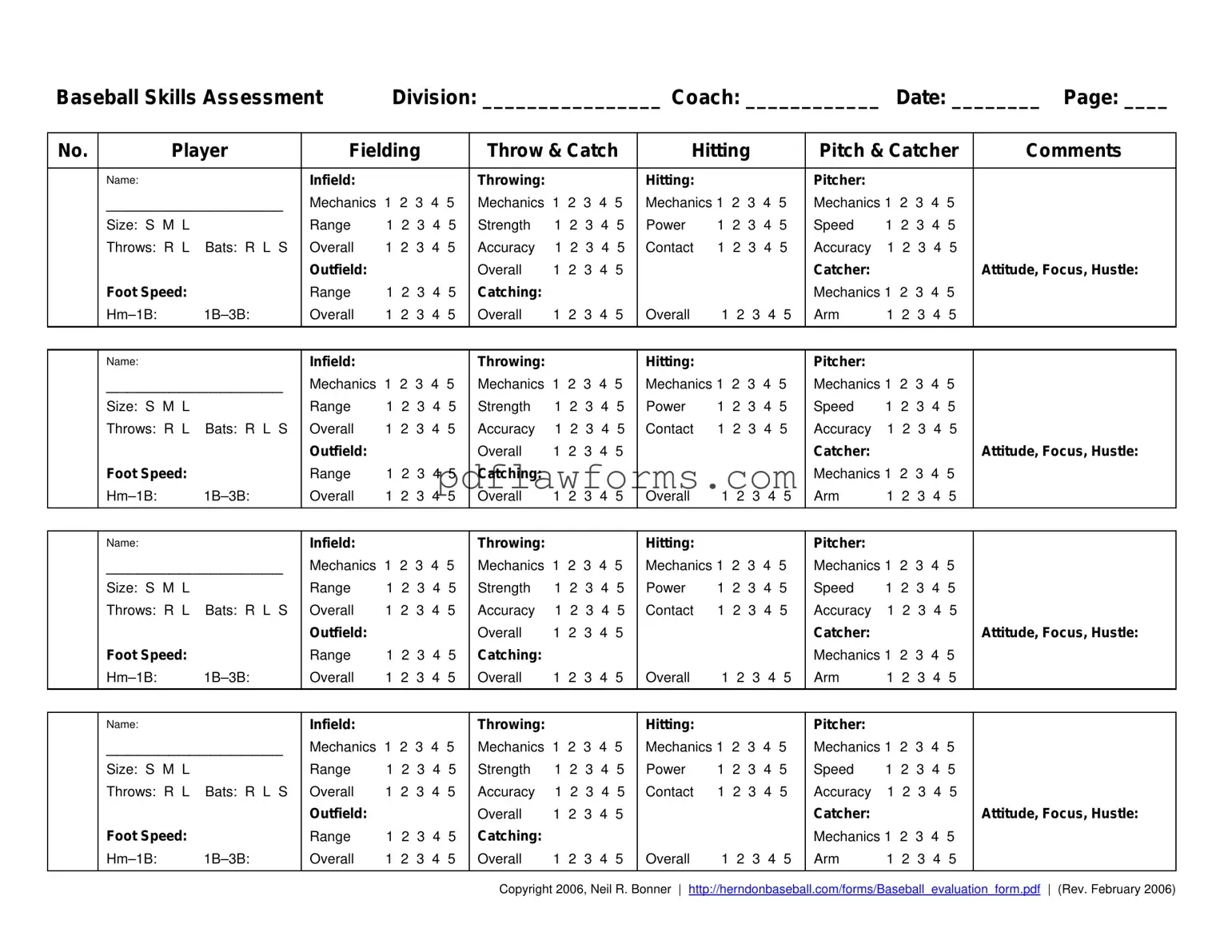Filling out the Baseball Assessment form can seem straightforward, but there are common mistakes that people often make. These errors can affect the evaluation process and ultimately impact a player's chances of making the team. Understanding these pitfalls can help ensure that the assessment is completed accurately and effectively.
One frequent mistake is failing to provide complete player information. Coaches rely on accurate names, divisions, and dates to track evaluations. Leaving any of these fields blank can lead to confusion later on. Always double-check that all required sections are filled out before submitting the form.
Another common issue is inconsistent scoring. The assessment uses a five-point scale, but evaluators sometimes assign scores without considering the player's overall performance. For instance, a player who shows great potential in one area but struggles in another may receive an unfairly high or low score. It's essential to evaluate each skill based on the player's performance relative to peers.
Many people also overlook the importance of specific comments. The comments section allows coaches to provide context for the scores given. Without these notes, it may be challenging for others to understand the rationale behind a score. Detailed observations can greatly enhance the value of the assessment.
Another mistake is not adhering to the evaluation structure. The form is designed with specific categories for a reason. Skipping sections or not following the outlined format can lead to incomplete assessments. Each category is crucial for a comprehensive evaluation, so be sure to assess every skill area.
Players sometimes also misrepresent their abilities by overstating or understating their skills. Honesty is key in the assessment process. Coaches appreciate players who provide an accurate reflection of their capabilities, as this allows for better team placements and development opportunities.
In some cases, individuals may ignore the importance of attitude and hustle. These traits are just as important as physical skills. Coaches look for players who demonstrate a positive attitude and a strong work ethic. Failing to acknowledge these attributes can result in a skewed assessment.
Another mistake is rushing through the evaluation. Taking the time to carefully assess each skill is crucial. Quick assessments may lead to inaccurate scores. Coaches should ensure they are attentive and thorough during the evaluation process.
Sometimes, evaluators forget to consider player size and physical attributes. These factors can influence a player’s performance on the field. Not taking them into account may lead to unfair evaluations, especially when comparing players of different sizes.
Finally, neglecting to discuss the assessment with other coaches can hinder the evaluation process. Collaboration can provide a more rounded perspective on a player's abilities. Coaches should take the time to share insights and discuss scores to ensure a fair assessment.
By being aware of these common mistakes, individuals can fill out the Baseball Assessment form more effectively. Accurate and thoughtful evaluations are essential for selecting the best players and fostering their development.
